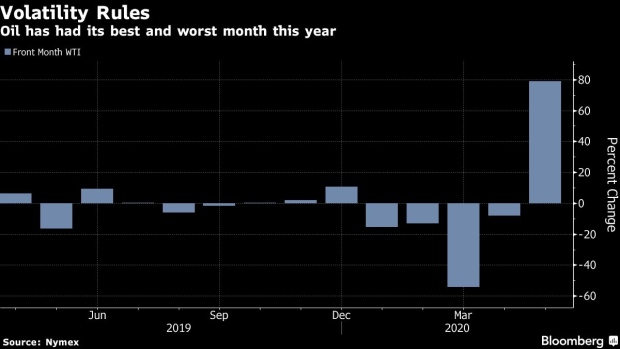May 31, 2020
Oil Declines as U.S. Riots, China Tensions Muddy Demand Outlook
, Bloomberg News

(Bloomberg) -- Oil slipped in Asia following a weekend of civil unrest in the U.S. and as President Donald Trump escalated his war of words with China, raising fresh doubts on the prospects for a recovery in demand.
Futures in New York fell as much as 2.1%, handing back some of Friday’s 5.3% gain. Investors are weighing how violent demonstrations across U.S. cities will impact on the reopening of the world’s biggest economy. Meanwhile, Trump’s long-touted response to China for its crackdown on Hong Kong included a barrage of criticism but stopped short of fully escalating tensions between the two nations.
The market may find some support from a report that OPEC and its allies are considering extending output cuts for one to three months. As the situation in the oil market is moving fast, the preference is to take short-term measures and not disrupt the rebalancing of the market, according to a delegate. The bloc is close to a decision to bring forward its next meeting by a few days to this week, according to people familiar with the situation.
Crude surged a record 88% in May, with U.S. futures on Friday rising above $35 a barrel for the first time since March, driven by massive supply curbs by producers across the world. Still, prices are well below levels at the start of the year, and demand that was crushed by the coronavirus crisis may need to show a sustained improvement for the rally to extend further.
The number of rigs drilling for oil in the U.S. fell for the 11th week, stemming the massive glut of crude that flooded the market. Yet there’s a risk that oil’s advance could tempt producers to turn on their taps again.
As Chinese oil demand rises to near pre-coronavirus levels, more and more tankers are hauling crude to the Asian nation from almost everywhere. The number of supertankers heading to China has jumped to 127, the highest level since at least the start of 2017, and probably ever, vessel-tracking data compiled by Bloomberg show.
©2020 Bloomberg L.P.


